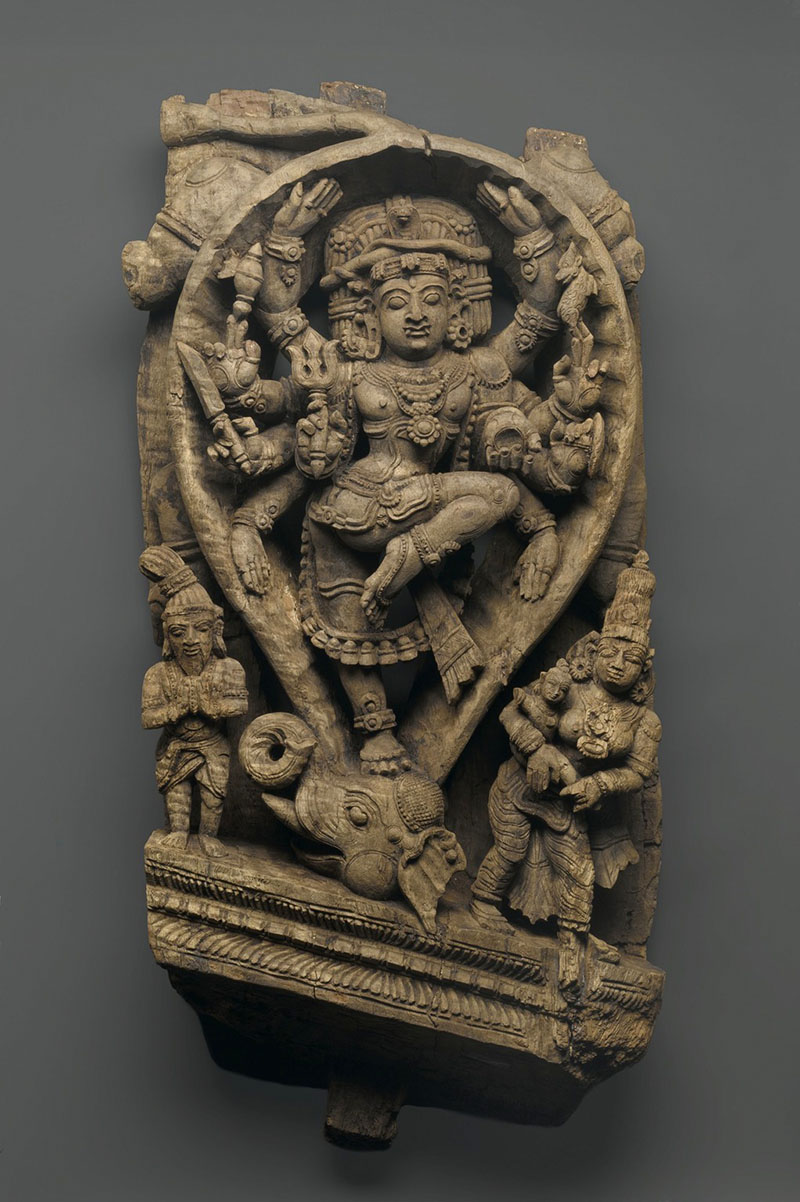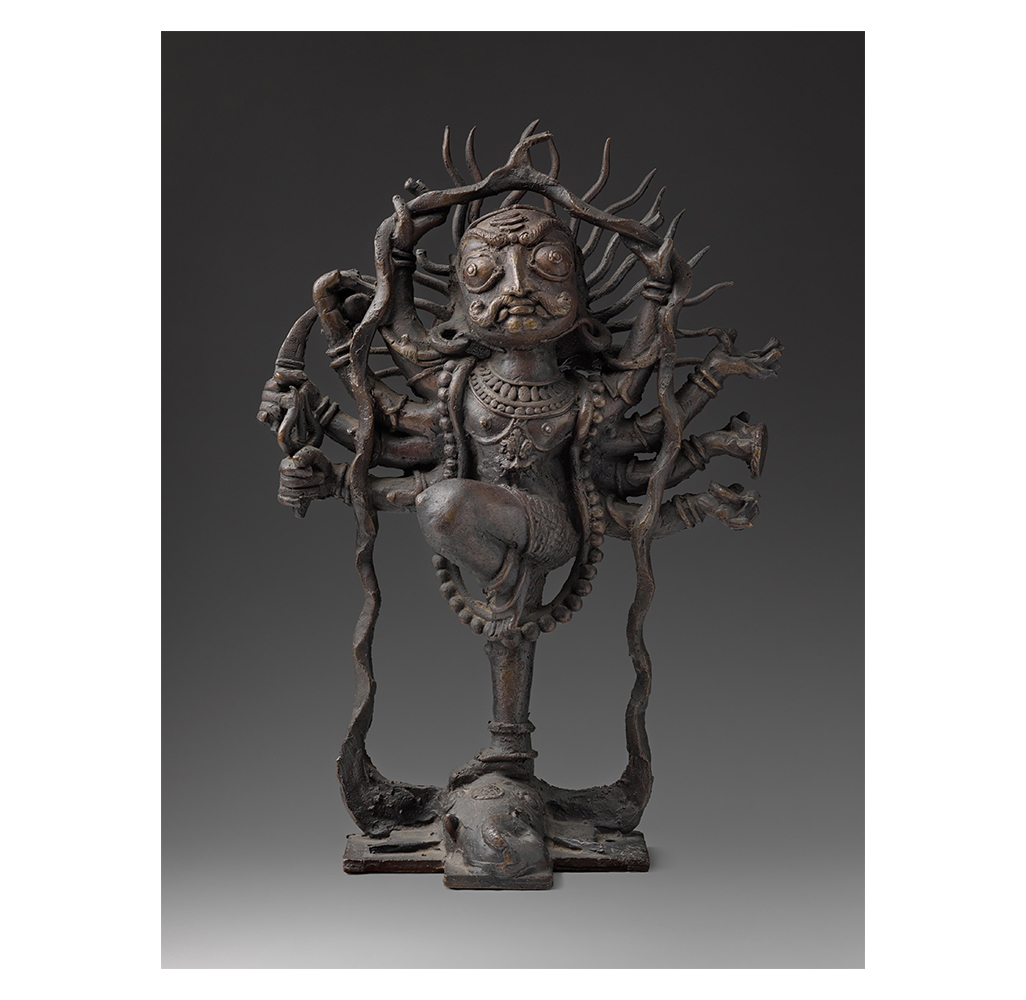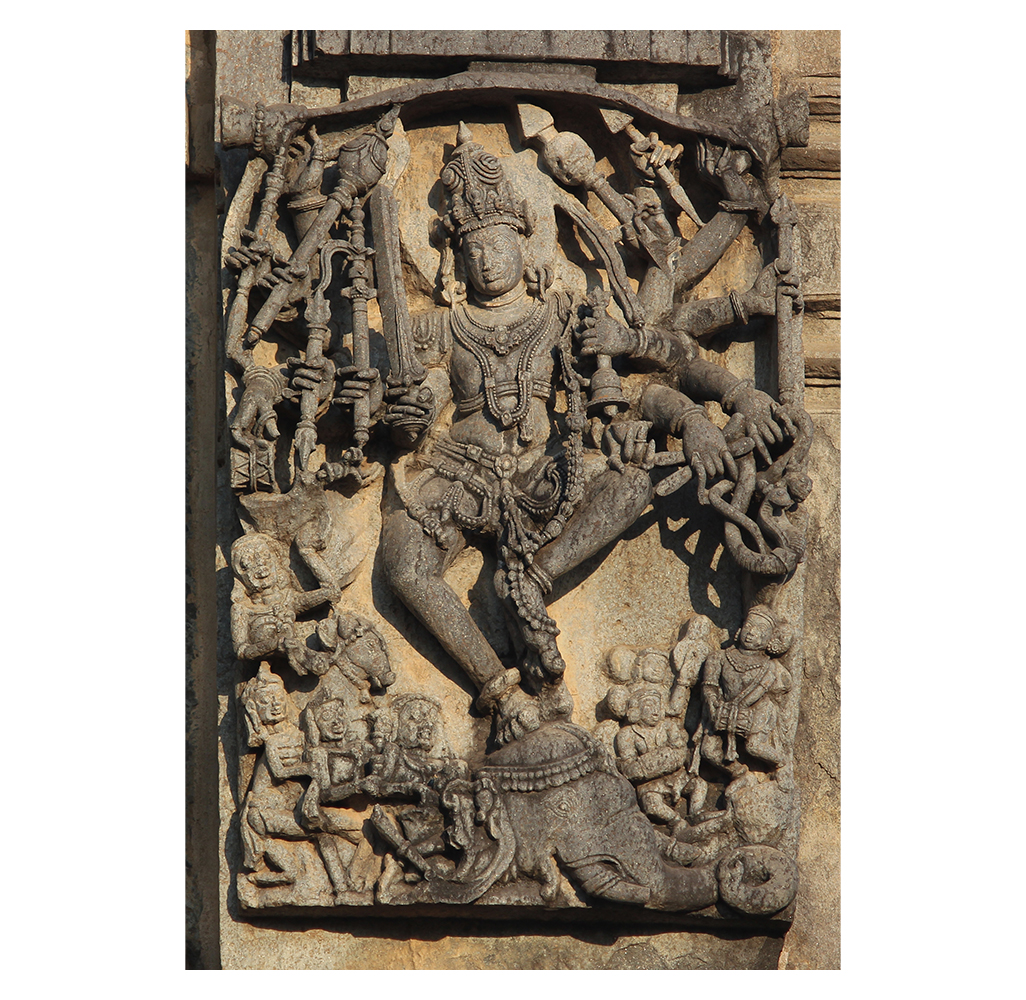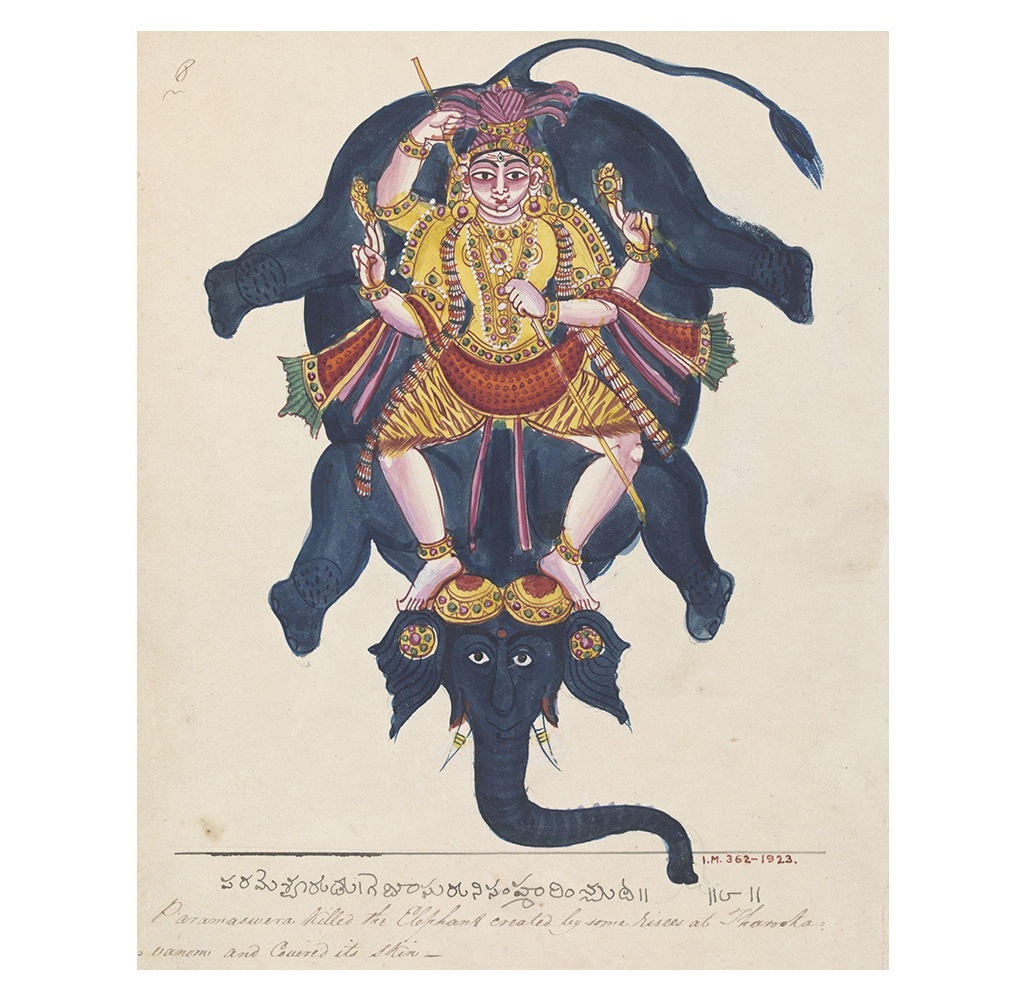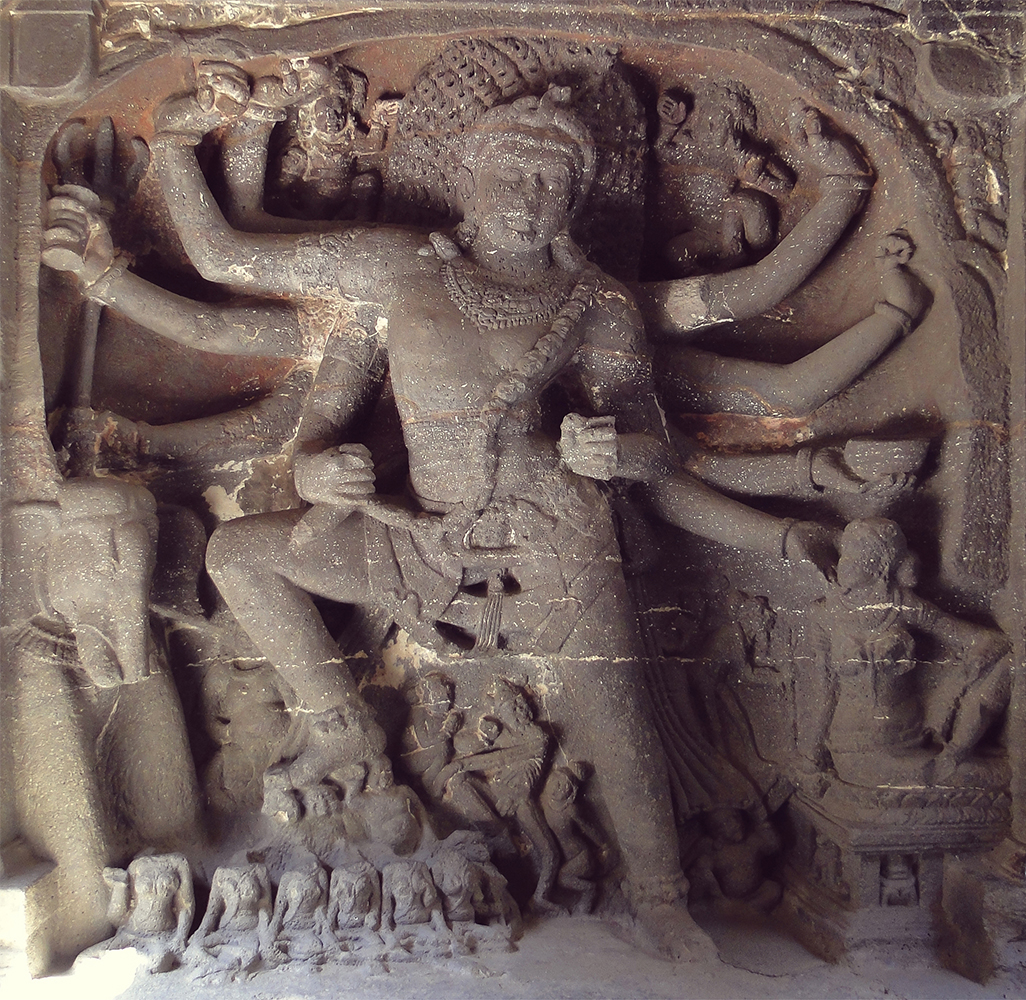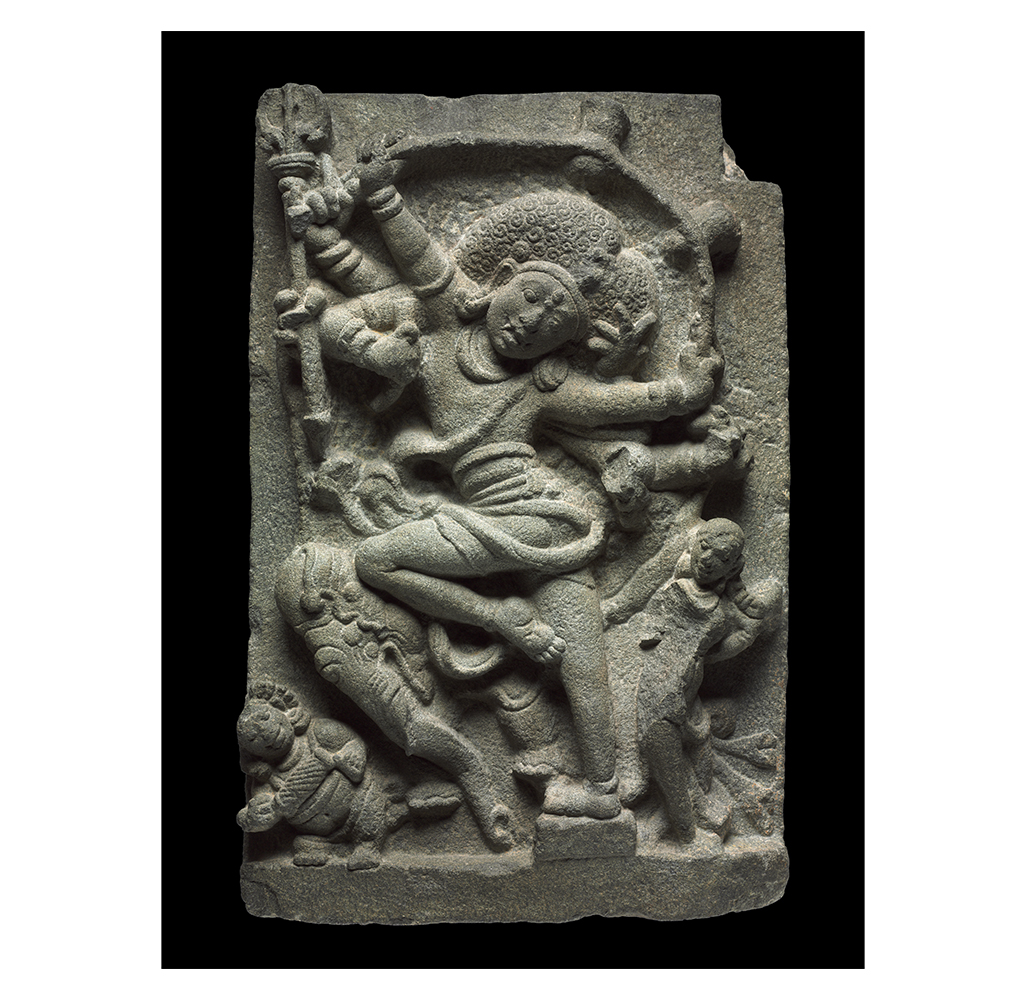ARTICLE
Gajasurasamhara
Sculptural depictions vary slightly from textual descriptions, showing the deity with eight or sixteen arms and in a dynamic pose. He is attended to by various deities and musicians and sometimes adorned with a garland of skulls. The image of Gajasurasamahara was popular in Chola, Hoysala and Pallava art, where he is depicted dancing on an elephant head. With his earliest depictions in sculpture dating to the sixth century, Gajasurasamhara remained a popular subject until the sixteenth and seventeenth centuries. Later, the deity appeared prominently in nineteenth-century South Indian painting traditions, such as the Mysore, Tiruchirapalli and Tanjore schools. Here, he was typically depicted with four or eight arms, standing upon Gajasura’s head, with the remainder of the elephant’s body or skin forming the background.
A bronze image of Gajasurasamhara forms the centre of worship at the Veeratteshwara Temple at Vazhuvoor, the only one dedicated to the deity. Carved stone images of Gajasurasamhara are seen today at the Brihadishwara Temple, Thanjavur and the Airavateshwara Temple, Kumbakonam in Tamil Nadu; the Hoysaleshwara Temple, Halebidu, the Amritesvara Temple, Mysore and the Chennakeshava Temple, Belur in Karnataka; and the Kailashanatha Temple in Ellora, Maharashtra.
Bibliography
Chakravarti, Mahadev. The Concept of Rudra-Siva Through The Ages. Delhi: Motilal Banarsidass, 1994.
Geer, Alexandra van der. Animals in Stone: Indian Mammals Sculptured Through Time. Leiden, Boston: Brill, 2008.
Pal, Pratapaditya. “South Indian Sculptures: A Reappraisal.” Boston Museum Bulletin 67, no. 350 (1969): 151–73. Accessed January 27, 2023. http://www.jstor.org/stable/4171519.
Rao, TA Gopinatha. Elements of Hindu Iconography. Vol. 2: Part I. Chennai: Law Printing House, 1916.
Venkatraman, Lakshmi. “On the Trail of an Icon.” The Hindu, November, 2016. Accessed January 27, 2023. https://www.thehindu.com/society/history-and-culture/On-the-trail-of-an-icon/article16694194.ece.




